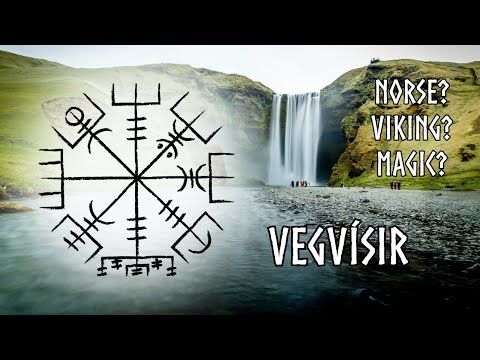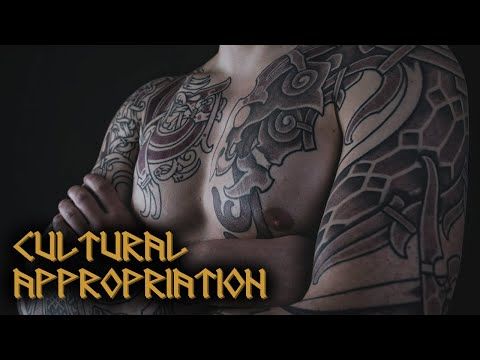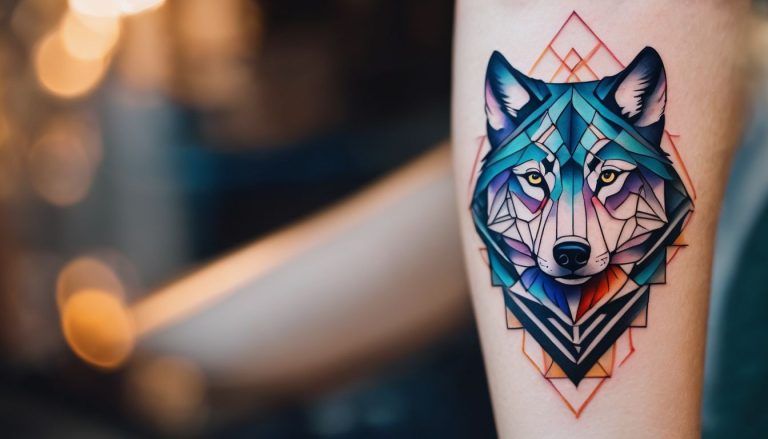The Symbolism and Significance of the Viking Compass Tattoo
 Viking compass tattoo stands at the edge of a mystical forest.” title=”A person with a Viking compass tattoo stands at the edge of a mystical forest.” class=”awimage” />
Viking compass tattoo stands at the edge of a mystical forest.” title=”A person with a Viking compass tattoo stands at the edge of a mystical forest.” class=”awimage” />
Choosing the right tattoo can be a tough decision. The Viking Compass, or Vegvisir, is more than just ink on skin. In this blog post, we’ll explore how this ancient symbol carries deep meanings of guidance and protection for those who bear it.
Uncover your path with us!
Key Takeaways
- The Viking Compass, also known as Vegvisir, originates from Norse mythology and is a symbol of guidance and protection.
- This tattoo comprises eight runes and other elements such as the central point and outer circle, which signify inner strength, unity with the cosmos, interconnectedness of life paths, and balance in one’s journey.
- Adopted by Pagan practices for its protective qualities during rituals, the Vegvisir aligns with beliefs in divine assistance amid challenges.
- While similar to Celtic tattoos in their intricate designs, Viking tattoos like Vegvisir have unique cultural significances tied to Norse heritage and are recognized for embodying strength and exploration.
- Placement of a Viking compass tattoo varies but is often found on visible parts of the body like forearms or chests to serve as reminders of personal direction and resilience.
The History and Meaning of the Vegvisir Symbol
The Vegvisir symbol has its roots in Norse culture and mythology, representing a spiritual compass for guidance. It incorporates various Nordic symbols and holds deep significance within Viking tradition.
Norse culture and mythology
Norse culture and mythology are rich with tales of gods, giants, and heroes. Viking warriors believed in a pantheon of deities who ruled over every aspect of life and death. They celebrated Odin, the all-father god of wisdom and war, Thor with his thunderous hammer Mjolnir, and Freya, the goddess of love and fertility.
These stories were not just myth; they shaped everyday life for ancient Norse people. Symbols like Vegvisir emerged from this cultural backdrop as powerful signs imbued with mystical properties.
Viking compass tattoo designs draw directly from these legends, embodying protection and guidance through their intricate patterns that echo Scandinavian symbols like runes. Sailors would use them hoping to avoid getting lost at sea—a testament to the rough maritime conditions Vikings often faced.
As spiritual guides, they held deep meaning beyond mere decoration or identification within Norse society. Today’s tattoos carry on these traditions by connecting wearers to their Nordic heritage while invoking ancient symbolism believed to offer luck and safe passage through life’s tumultuous seas.
Symbolism and interpretation of Vegvisir
The Vegvisir, also known as the Viking Compass, symbolizes guidance and protection in Norse mythology. Comprising eight Viking runes, this ancient symbol is believed to offer spiritual connection while preventing individuals from losing their way.
The Vegvisir holds significance in helping people during difficult times or problems. It has been used historically as a visual spell of protection against getting lost, especially at sea when navigation was perilous.
When adorned as a tattoo, the Vegvisir serves not only as a representation of good luck but also stands as a proud display of Viking heritage. Furthermore, its association with popular figures like Icelandic singer Björk has contributed to its recognition and popularity.
The symbols incorporated in the design
The Viking compass tattoo design incorporates several symbols that hold deep significance in Norse culture and mythology. These symbols are:
- Eight Viking runes, representing ancient wisdom and guidance
- The central point, symbolizing the center of the universe and one’s inner strength
- The outer circle, signifying protection and unity with the cosmos
- Intersecting lines, representing the interconnectedness of different paths in life
- Geometrical patterns, reflecting balance and harmony in one’s journey
The Connection Between the Vegvisir and Paganism
Vegvisir has deep connections to Paganism, an ancient belief system that worships nature and multiple deities. The symbol is often used in Pagan rituals as a guide for protection and guidance.
Origin and beliefs of Paganism
Paganism originates from ancient polytheistic traditions and encompasses a diverse set of spiritual beliefs, often centered on nature worship and reverence for natural forces. It predates major world religions and is rooted in various cultures and civilizations, including Norse, Celtic, Greek, Roman, and Egyptian traditions.
Pagans follow a belief system that acknowledges multiple gods and goddesses, celebrating the interconnectedness of life with rituals and ceremonies aligned with the rhythms of nature.
For them, symbols like the Viking Compass hold deep significance in representing their connection to the natural world.
Paganism ascribes mystical qualities to symbols such as the Vegvisir or Viking compass as part of their spiritual practices. These symbols are viewed as conduits for protection against adversity or harm while providing guidance amid life’s journeys.
Use of Vegvisir in Pagan rituals
Vegvisir holds a significant place in Pagan rituals and practices due to its association with guidance and protection. The symbol is used as a spiritual tool, believed to aid in navigation during rituals and ceremonies, ensuring that participants find their way through the spiritual realm.
Its usage in Pagan rituals reflects the belief in its power to provide direction, protection, and luck to those who incorporate it into their practices.
Paganism integrates the Vegvisir as a visual representation of faith and reliance on divine assistance during challenging times or ceremonial events. The symbol’s connection with attracting good fortune aligns with Pagan beliefs surrounding the importance of harnessing positive energy.
Viking and Celtic Tattoos: Are They the Same?
Viking and Celtic tattoos share some similarities in terms of their intricate designs and historical significance, but they also have distinct differences that make each culture’s symbols unique.
Understanding the distinctions can help individuals choose a tattoo design that resonates with their personal heritage and beliefs.
Similarities and differences between Viking and Celtic tattoos
Viking and Celtic tattoos are often intertwined in modern tattoo culture, each steeped in ancient symbolism and history.
| Aspect | Viking Tattoos | Celtic Tattoos |
|---|---|---|
| Roots | Derived from Norse mythology and culture. | Originated from Celtic history and beliefs. |
| Symbolism | Include symbols like Vegvisir for guidance and protection. | Incorporate knots and spirals symbolizing the cycle of life. |
| Runes | Often feature runes which have specific meanings. | Do not traditionally use runes in their designs. |
| Aesthetic | Typically more rugged and direct in design. | Characterized by intricate knotwork and looping patterns. |
| Cultural Significance | Reflect Viking heritage and are associated with strength and exploration. | Represent Celtic heritage and are linked to nature and the cosmos. |
| Modern Popularity | Popularized by interest in Viking history and Norse mythology. | Gained attention for their complex beauty and symbolic depth. |
| Religious Connection | Occasionally intertwined with Pagan beliefs. | Often connected to ancient Paganism, more so than Viking symbols. |
| Notable Features | Vegvisir is a notable Viking symbol associated with the tattoos. | Celtic Cross is a distinctive emblem in Celtic tattoos. |
Why choose a Viking compass tattoo over other Celtic symbols
When selecting a Viking compass tattoo over other Celtic symbols, individuals are drawn to the rich history and cultural significance associated with Norse mythology. The Vegvisir symbolizes guidance and protection, serving as a powerful emblem of supernatural aid in navigating life’s journeys.
As a visual representation of luck and heritage, the Viking compass tattoo captures the allure of ancient Norse traditions while embodying strength and resilience in today’s world.
With its unique blend of mysticism and symbolic meaning, the Viking compass stands out as an evocative choice for those seeking a distinctive tattoo design. Its association with providing directions during times of uncertainty adds depth to its allure, making it a compelling option for both men and women looking to express their connection to Viking culture through body art.
Significance and Placement of the Viking Compass Tattoo
The Viking compass tattoo holds significance as a symbol of luck and protection, making it a popular choice for individuals seeking to connect with their Norse heritage. Common placements for this tattoo include the forearm, chest, or upper back to showcase its meaning and importance in one’s life.
Meaning behind getting a Viking compass tattoo
Choosing to get a Viking compass tattoo represents a connection to Norse heritage and a desire for guidance in life’s journey. The symbol, also known as the Vegvisir, signifies protection against getting lost and attracts good luck.
It reflects strength, resilience, and the spirit of adventure often associated with Viking culture. Incorporating this ancient symbol into a tattoo is an affirmation of personal navigation through life’s challenges while embracing the legacy of the fearless Viking explorers.
The placement of the Viking compass tattoo may vary but is often on areas that are easily visible, such as the forearm or upper arm. This underscores its significance as a visual reminder of direction and perseverance when facing adversity or embarking on new adventures.
Common placement of the tattoo
The Viking Compass tattoo is commonly placed on the upper arm, back, or chest
Conclusion: The Viking Compass Tattoo as a Symbol of Luck and Heritage
In conclusion, the Viking Compass tattoo holds significant meaning in Norse mythology and modern culture. It represents guidance, protection, and luck for those who wear it. The symbol’s connection to Viking heritage makes it a popular choice for both men and women seeking to honor their ancestry.
As an ancient artifact with spiritual significance, the Viking Compass tattoo serves as a powerful symbol of strength and resilience throughout history. Its enduring presence in contemporary society reflects its timeless appeal as a meaningful emblem of personal identity and cultural pride.
FAQs
1. What does the Viking Compass Tattoo symbolize?
The Viking Compass Tattoo, often adorned by both males and females, represents guidance and protection during journeys, echoing the spirit of Viking exploration.
2. Can anyone get a Viking Compass Tattoo?
Yes! Anyone interested in Norse culture or looking for a meaningful artifact-like design can get a Viking Compass tattoo.
3. Do people combine Norse runes with the Viking Compass Tattoo?
Absolutely! Combining Norse runes with a Viking compass tattoo is popular as it adds personal significance or tells a story unique to the wearer.
4. Is it common to see other Viking symbols like ships or axes with the compass tattoo?
Yes, individuals frequently incorporate other powerful symbols such as the Viking ship or axe to enhance their tattoo’s connection to ancient Nordic heritage.









